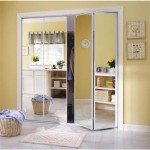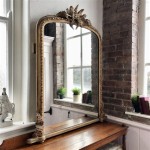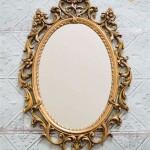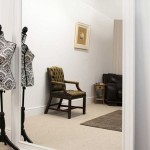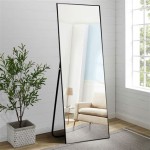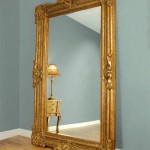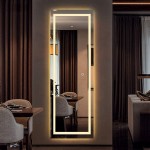One-Way Mirror Vs. Normal Mirror
Mirrors are ubiquitous objects, serving both functional and decorative purposes. While the average individual is familiar with the standard mirror, fewer understand the mechanics of the one-way mirror, also known as a two-way mirror. This article aims to explore the differences between these two types of mirrors, examining their construction, functionality, and applications.
The fundamental difference between a one-way mirror and a normal mirror lies in the reflective surface. A standard mirror utilizes a thick layer of reflective backing, typically silver or aluminum, applied to the back of a glass sheet. This backing reflects nearly all incident light, creating a virtual image that appears to be behind the mirror's surface. The reflectivity is close to 100%, resulting in a clear and bright reflection.
One-way mirrors, in contrast, employ a thin, partially reflective metallic coating. This coating is applied to the front surface of the glass, unlike the backing on a standard mirror. The thinness of this metallic layer is crucial to its functionality. It allows a portion of the light to pass through the glass while reflecting the remaining portion. This partial reflectivity is the key to the "one-way" illusion.
The "one-way" effect is achieved through a difference in lighting conditions between the two sides of the mirror. The side intended for observation (typically the brighter side) reflects enough light to create a mirrored image. Simultaneously, a portion of light from the observation side transmits through the mirror to the other side (the dimmer side). From the dimmer side, the transmitted light from the brighter side overpowers the weak reflection of the dimmer room, allowing observers to see through the mirror.
Imagine two rooms separated by a one-way mirror. One room is brightly lit (the observation room), and the other is dimly lit (the subject room). An observer in the bright room sees their own reflection and a faint image of the subject room due to the limited light transmitting from it. Conversely, a person in the dimly lit room sees primarily the light coming through from the brightly lit observation room, effectively seeing through the mirror as if it were a tinted window.
The percentage of light reflected and transmitted is determined by the thickness of the metallic coating applied to the one-way mirror. A thicker coating increases reflectivity and reduces transmission, while a thinner coating does the opposite. This balance allows manufacturers to tailor one-way mirrors for specific applications.
The applications of one-way mirrors are diverse. They are frequently employed in law enforcement for observation rooms and interrogation settings. This allows law enforcement personnel to observe suspects without being seen. One-way mirrors are also used in psychological research for observation studies and experiments.
Furthermore, one-way mirrors find applications in architectural design and interior decoration. They can create the illusion of larger spaces and provide a unique aesthetic element. Their use in teleprompters is also common, allowing presenters to read text while appearing to look directly at the camera.
In the entertainment industry, one-way mirrors facilitate stage illusions and magic tricks. They also have practical applications in theatrical settings, enabling stage managers to view the audience without disrupting the performance.
Security and surveillance applications utilize one-way mirrors for discreet monitoring. They can be integrated into retail environments for loss prevention purposes and in security checkpoints for unobtrusive observation.
Scientific applications include their use in beam splitters for optical experiments and in certain types of microscopy. These specialized applications necessitate precise control over the reflectivity and transmission characteristics of the mirror.
While both standard mirrors and one-way mirrors utilize reflection, the difference in construction and the resulting light management capabilities distinguish their functionalities. Standard mirrors provide a near-perfect reflection for everyday use, while one-way mirrors leverage partial reflectivity and lighting differentials to create a unique optical effect with a wide range of applications.
The effectiveness of the one-way mirror is highly dependent on the lighting conditions. If the lighting on both sides becomes equal, the one-way effect is diminished, and the mirror begins to function more like a standard, partially transparent mirror. This is a crucial consideration when implementing one-way mirrors for specific purposes.
Identifying a one-way mirror can be challenging, but there are a few methods. One method involves observing for subtle differences in reflectivity compared to a known standard mirror. Another method involves placing a fingernail against the surface; with a standard mirror, a gap will be seen between the nail and its reflection, while with a one-way mirror, the nail and its reflection will appear to touch due to the reflective surface being on the front of the glass.
Can You Shine Light Through A One Way Mirror Quora

How Does A Two Way Mirror Work

Two Way Mirror Supplier One Wholer Glass Manufacturer Ordinary Mirrors

3m One Way Mirror Window Safety Security Epd

How To Install One Way Mirror Morn Glass Best Architectural Supplier

How Does One Way Mirror Work

How To Tell If A Mirror Is One Way Glass Boing

Fingernail Test Comparison Between Standard Mirror And Acrylic Two Way Mirrors

4mm One Way Glass

Easy Ways To Make A One Sided Mirror With Pictures Wikihow

